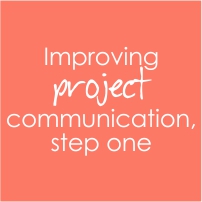 From the moment we are brought into this world, all our caretakers’ efforts are focused on one aspect of our education: teaching us how to communicate. First, we’re encouraged to express our thoughts in gestures and sounds, until we later learn to mutter our first words, compose our first sentences, write our first essays.
From the moment we are brought into this world, all our caretakers’ efforts are focused on one aspect of our education: teaching us how to communicate. First, we’re encouraged to express our thoughts in gestures and sounds, until we later learn to mutter our first words, compose our first sentences, write our first essays.
With such a large amount of education and experience in communication, one would think that it would have become second nature, that we would all be fluent, efficient communicators. Unfortunately, this is not always the case.
How often have you been engaged in a conversation, or worse yet, a meeting, where the message being conveyed has been an unclear or even incoherent? Have you left status meetings without having a clear view of the actual status of a project, or what the next steps are?
The reasons why people are bad at communicating and getting their message across are numerous and range from personality traits (shyness, arrogance, assertiveness may all influence effectiveness of communication) to the use of jargon or non-verbal communication.
Our immediate concern, however, is how do we fix it? In this series of articles we’ll look at three ways in which to improve communication so that you and your project team can ensure a higher project success rate.
Communication fix 1: Communicate the right amount
We often bombard each other with information, for example, discussing every detail in every status meeting with every team member. When people receive an overflow of information, they often struggle to see the relevance to themselves and the key points of the message can be lost.
To communicate effectively one needs to estimate the amount of information required by the other person to make good decisions. Every piece of information that is superfluous should be excluded.
Once the correct amount of information has been determined, managers can set up standardised reports to be used repeatedly for a specified audience. This will ensure that all stakeholders receive the intended benefit on an on-going basis.
While the correct amount of information is important, one also needs to communicate to the right people (Improving project communication, step two) and in the right format (Improving project communication, step three). We’ll explore these subjects in our future blogs.
Are you looking for a project and portfolio management tool to improve project communication? If so, try a free 30-day trial of Project Portfolio Office (PPO) today at www.go2ppo.com/try.php.
PPO is an award winning online project portfolio management and collaboration application. PPO is simple, immediate, secure and affordable. PPO is flexible and can be configured to support any methodology.


